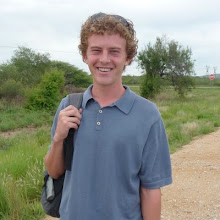
Here's something I concocted recently as I was reminiscing about my trip in May when I hiked Fish River Canyon. (Amazing photos courtesy of Greg) Plus some juggling pictures taken with my less than amazing shotsnapper.
Scaling new heights to get my juggling fix
Only took a few tries to nail this self timer
Death does not prevent juggling
Playing catch with nature
FISH RIVER CANYON'S
POETIC COMPANION
One morning in May,
our trek had begun.
We ten went to play
'mongst the sand, rocks, and sun.
Entranced were we
by the canyon's allure,
we pranced with glee
like worms in manure.
Our bags were full packed,
three tons heavy duty.
But it didn't detract
from Fish River's beauty.
The rocky descent
was tough on our knees.
So hungry and spent,
Yum Yum mac 'n' cheese!
Through the nights we slept,
we'd arise with the dawn.
The morning shadows crept.
Post-breakfast we'd be gone.
Pure nature undefiled.
No lights or noise or cars.
Enveloped by the wild,
sleeping out 'neath the stars.
When the tents had been pitched,
although nipply of clime,
our clothing was ditched.
Twas skinny dip time!
When diving in the water,
beware of sunken rocks.
Though you may swim like an otter,
a neck's weaker than an ox.
Energy conservation,
we cut right through the shorts.
Avoiding dehydration,
gulp down the pints and quarts.
To cross the river with flair,
leap and jump and hop,
from stone to stone with care,
or in the wet kerplop!
Lentils, pasta, oatmeals,
apples, cheese, and bread.
Is this how a goat feels,
but stuffed with grass instead?
Though our fuel ran low,
we didn't despair.
Wood fires aglow,
in the brisk canyon air.
Twixt cranny, crag, and rock,
brown hyrax lithe and spry.
Danger, careful, look!
There's an eagle in the sky!
Hoofprints between the stones,
their spoor strewn 'cross the place.
Some dusty sunbaked bones.
Wild horses? Just their trace...
We reached the trail's end.
Our joints and muscles shot.
Relieved to heal and mend,
and soak in springs so hot.
Though we started the journey,
with our nerves all aquiver,
no one left on a gurney,
Yes! We conquered Fish River!

